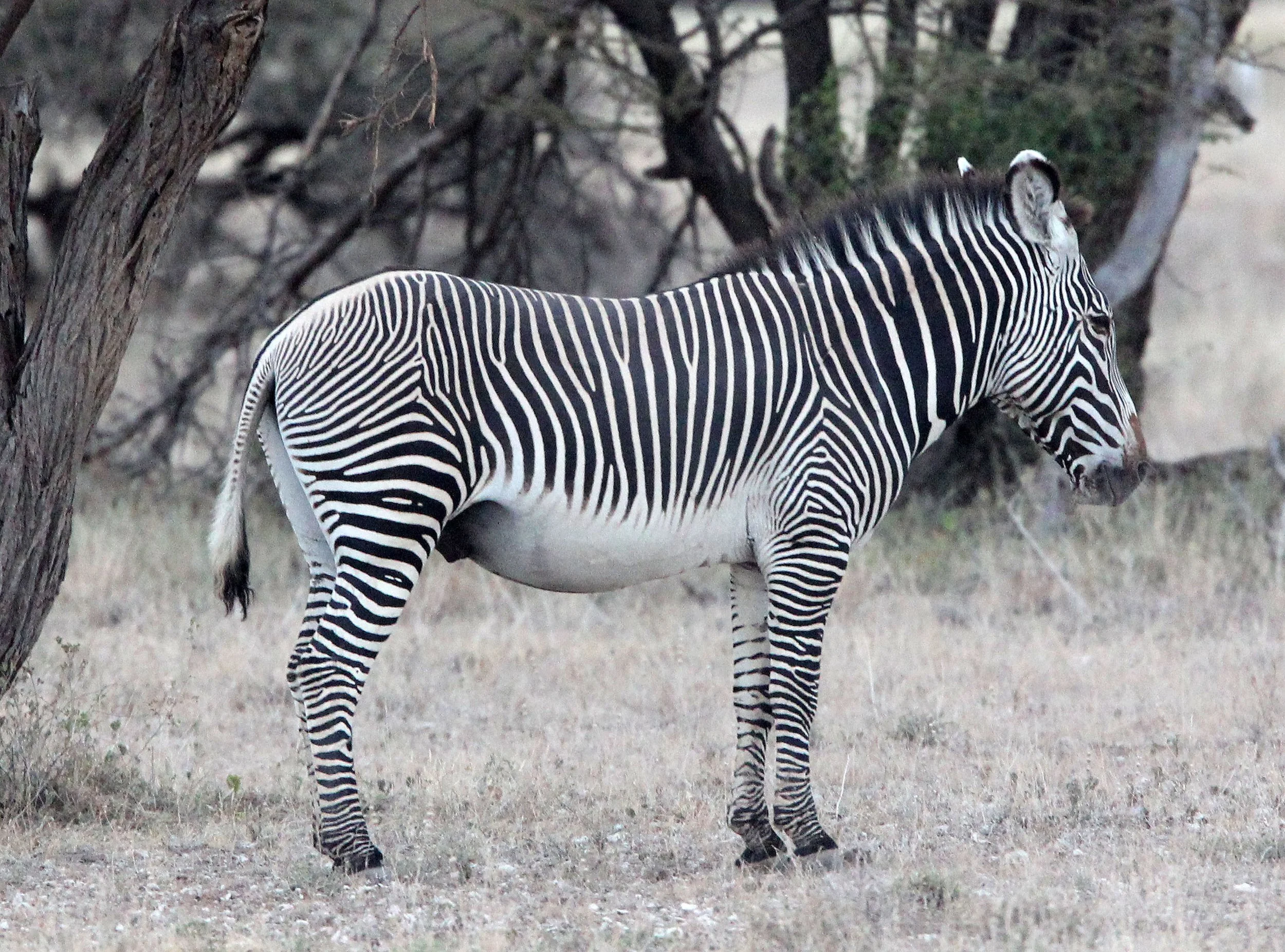Grévy's zebra (Equus grevyi), also known as the imperial zebra, is the largest living wild equid and the most threatened of the three species of zebra, the other two being the plains zebra and the mountain zebra. Named after Jules Grévy, it is found in parts of Kenya, Somalia and Ethiopia. Superficially, Grévy's zebras’ physical features can help to identify it from the other zebra species; their overall appearance is slightly closer to that of a mule, compared to the more “equine” (horse) appearance of the plains and mountain zebras. Compared to other zebra species, Grévy’s are the tallest; they have mule-like, larger ears, and have the tightest stripes of all zebras. They have distinctively erect manes, and more slender snouts.
The Grévy's zebra live in semi-arid savanna, where they feed on grasses, legumes, and browse, such as acacia; they can survive up to five days without water. They differ from the other zebra species in that they do not live in a harem, and they maintain few long-lasting social bonds. Stallion territoriality and mother–foal relationships form the basis of the social system of the Grévy's zebra. Despite a handful of zoos and animal parks around the world having had successful captive-breeding programs, in its native home this zebra is listed by the IUCN as endangered. Its population has declined from 15,000 to 2,000 since the 1970s. In 2016, the population was reported to be “stable”; however, as of 2020, the wild numbers are still estimated at only around 2,250 animals, in part due to anthrax outbreaks in eastern Africa.




























